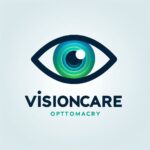

Understanding Presbyopia: Symptoms & Solutions
an age related vision problem
As you get older, near vision may start to blur. This happens to almost everyone. It’s called presbyopia. Millions of people face it. They find it hard to see up close. Things like reading a book or looking at a menu become a challenge. But there are ways to fix this. You can get clear near vision back. This will help you keep on doing the things you love.
Key Takeaways:
- Presbyopia is a common condition that occurs with aging, resulting in a loss of clear close-up vision.
- Symptoms of presbyopia include blurry near vision, headaches, and eye strain.
- Risk factors for presbyopia include age, medical conditions, and certain medications.
- If you experience symptoms of presbyopia, it’s essential to see an optometrist for a comprehensive eye exam.
- Treatment options for presbyopia range from reading glasses and contact lenses to surgical procedures.
Symptoms of Presbyopia
Presbyopia affects the eyes as we get older. People with it find it hard to see up close. They might develop other issues too.
One key sign is not seeing clearly when things are close. It’s tough to make out small details or fine print. People might have to hold stuff far away to read well. This can be bothersome and make some tasks harder.
Those with presbyopia might also get headaches or feel their eyes are tired. These problems show up more when reading or using a computer for long periods. This stresses the eyes a lot.
The signs of presbyopia can differ from one person to the next. Some folks have only mild problems. Yet, for others, it can really mess with their eyesight.
Quotes:
“Since I started experiencing presbyopia, I constantly struggle to read small print. I have to hold books and menus at arm’s length, which is not very convenient. It also gives me headaches if I read for too long.” – Sarah Thompson, Presbyopia Patient
“I didn’t realize how much my eyes were straining until I got my reading glasses for presbyopia. The difference was incredible! No more headaches or squinting to see clearly.” – Mark Evans, Presbyopia Patient
Symptoms of Presbyopia Summary:
Common Symptoms of Presbyopia: | Frequency |
|---|---|
Blurry vision when focusing on close objects | Experienced by most individuals with presbyopia |
Headaches | Experienced by most individuals with presbyopia |
Eye strain | Experienced by most individuals with presbyopia |
To sum up, finding it hard to see up close is mainly what presbyopia causes. This can lead to headaches and eye strain too. It’s crucial to understand these signs. And it’s important to find ways to improve close-up vision and avoid discomfort.
Risk Factors for Presbyopia
Presbyopia is often linked to getting older. But there are many other factors involved. These can lead to presbyopia appearing at varying life stages. They can also make its symptoms worse.
Age
Medical Conditions
Farsightedness
Having farsightedness can mean you see presbyopia symptoms sooner in life. With farsightedness, faraway things look clearer than close-up things. This can come before or with presbyopia.
Medications
Some medicines can also play a part in presbyopia. Drugs like antihistamines, antidepressants, and diuretics have been linked to presbyopia. They can make your eyes’ focusing issues worse.
Learning about these risk factors is key. It helps people see if they might face presbyopia. Knowing this, they can work to keep their eyes healthy.
When to See an Optometrist
If you’re having trouble with your eyes, like trouble focusing up close, seeing an optometrist is key. They’re experts at checking your eyes for issues, including presbyopia. This condition makes it hard to see things close up as you get older.
During your eye check, the optometrist will look closely at your near vision. They’ll test if presbyopia could be causing this. They will also check your vision at different distances and the health inside your eyes.
It’s vital to visit your optometrist regularly to keep your eyes healthy and catch problems early. There, you’ll get care just right for you. They might suggest wearing glasses or contacts to help with your vision.
By taking quick action, you can enjoy better vision and an easier life. So, book your eye exam today. Let the experts help you see clearly again, doing what you love without the vision troubles.
Treatment Options for Presbyopia
Managing presbyopia means enhancing your near vision. There are many ways to do this. Which treatment you pick depends on what suits you best. Let’s look at some common choices.
1. Reading Glasses
Reading glasses are a quick fix for presbyopia. They make small text easier to see. You can get them from a store or through a prescription.
2. Bifocal Glasses
Bifocal glasses help with near and far vision. If you need both, they might be a good choice. They have two prescriptions in each lens.
3. Contact Lenses
For a contact lens option, some are made for presbyopia. These lenses can help you see clearly at any distance. Your eye doctor can find the right type for you.
4. Surgical Procedures
If you want something more permanent, certain surgeries can help. They work by changing your eye’s lens or cornea.
Options like LASIK, corneal inlays, and lens exchange can all correct presbyopia.
Before making a choice, talk to your eye doctor. They will help you understand the best option for your eyes. They’ll explain the advantages, risks, and costs of each treatment.
Treatment Option | Pros | Cons |
|---|---|---|
Reading Glasses | – Simple and affordable | – Need to carry them around |
Bifocal Glasses | – Correct both distance and near vision | – Need to adjust to different lens areas |
Contact Lenses | – No need for glasses | – Must be cleaned often |
Surgical Procedures | – Can offer lasting correction | – Surgery has risks |
It’s always best to treat presbyopia early. This can greatly improve your vision and life quality. If you’re having trouble seeing up close, see an eye doctor soon. They can guide you in choosing the best treatment.
Conclusion
Presbyopia is a natural part of getting older, hitting most people in their 50s. It means losing the ability to focus close up, making tasks like reading difficult. But, there are ways to make things better.
One easy fix is using reading glasses. They make things clearer when you’re looking up close. With them, you can enjoy reading books and working on a computer without straining.
For those who don’t like glasses, there are specialized contact lenses for presbyopia. They come in types that help you see clearly up close and far away. Ask your eye doctor which might work best for you.
Don’t skip those eye check-ups either. They’re key in keeping your eyes healthy and your vision sharp. Your eye doctor can spot any changes and tweak your prescription as needed. Taking care of your eyes is important for staying in good shape as you get older.
FAQs
What is presbyopia?
Presbyopia is a common eye condition linked to aging. It causes trouble seeing things up close, making them blurry. This happens as the eye’s lens grows stiffer over time.
What are the symptoms of presbyopia?
The main sign of presbyopia is finding close-up vision blurry. It can also lead to headaches and tired eyes. These problems often come up when you’re focusing on something close for a while.
What are the risk factors for presbyopia?
Age stands out as the key risk for presbyopia, hitting most people between 40 and 65. Health issues such as heart disease, plus conditions like diabetes, might raise the odds. Being farsighted or taking certain drugs can also add to the risks.
When should I see an optometrist for presbyopia?
If you notice problems with up-close vision, visiting your optometrist is smart. They can do a full eye check to spot presbyopia and its effects on your sight.
What are the treatment options for presbyopia?
Treatment for presbyopia ranges from reading glasses to more complex surgeries. Your eye doctor can guide you on what’s best, considering your lifestyle and health. It’s about finding the right balance of benefits, risks, and costs for you.
Is presbyopia preventable?
If you notice problems with up-close vision, visiting your optometrist is smart. They can do a full eye check to spot presbyopia and its effects on your sight.
